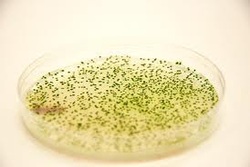
Scientists at the UCLA Henry Samueli School of Engineering and Applied Science genetically altered a cyanobacterium to utilise carbon dioxide and generate isobutanol, a liquid fuel that may potentially be an alternative for gasoline. The reaction is directly powered by sunlight, by means of photosynthesis.
According to the researchers, this new technique holds two advantages for the achievement of a greener and cleaner energy economy. First, it makes use of carbon dioxide, thus reducing emissions of greenhouse gases caused by fossil fuel burning. Second, it utilises solar energy to change carbon dioxide into isobutanol that may be used in automobiles.
As other gasoline alternatives consist of developing biofuels from algae or plants, these processes need a number of intermediate measures before its refinement into efficient fuels.
“This new approach avoids the need for biomass deconstruction, either in the case of cellulosic biomass or algal biomass, which is a major economic barrier for biofuel production”, stated study head James C. Liao, the associate director of the UCLA-Department of Energy Institute for Genomics and Proteomics. “Therefore, this is potentially much more efficient and less expensive than the current approach”.
With the use of the cyanobacterium Synechoccus elongatus, scientists first genetically raised the amount of RuBisCO, a carbon dioxide-fixing enzyme. To create a strain that utilises sunlight and carbon dioxide for the production of isobutyraldehyde gas, they then spliced genes generated from other bacteria. The high vapour pressure and low boiling point of the gas allows it to be stripped easily from the system.
According to the researchers, this new technique holds two advantages for the achievement of a greener and cleaner energy economy. First, it makes use of carbon dioxide, thus reducing emissions of greenhouse gases caused by fossil fuel burning. Second, it utilises solar energy to change carbon dioxide into isobutanol that may be used in automobiles.
As other gasoline alternatives consist of developing biofuels from algae or plants, these processes need a number of intermediate measures before its refinement into efficient fuels.
“This new approach avoids the need for biomass deconstruction, either in the case of cellulosic biomass or algal biomass, which is a major economic barrier for biofuel production”, stated study head James C. Liao, the associate director of the UCLA-Department of Energy Institute for Genomics and Proteomics. “Therefore, this is potentially much more efficient and less expensive than the current approach”.
With the use of the cyanobacterium Synechoccus elongatus, scientists first genetically raised the amount of RuBisCO, a carbon dioxide-fixing enzyme. To create a strain that utilises sunlight and carbon dioxide for the production of isobutyraldehyde gas, they then spliced genes generated from other bacteria. The high vapour pressure and low boiling point of the gas allows it to be stripped easily from the system.
 RSS Feed
RSS Feed